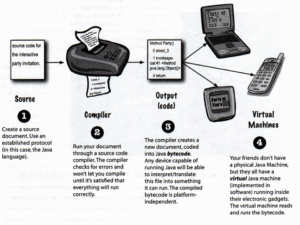java virtual machine(jvm) is a software. which is machine dependent. every machine has a different jvm but the interpreting code is same,
which help for running any java programs.
it is a interpreter
jvm work is following types
-
- class loading
-
- byte code varification
-
- give memory of function one time
-
- run the garbage collector
-
- generate a exception
- create a buffer memory for any object
it can secure our java prog. from any unauthorized code.


